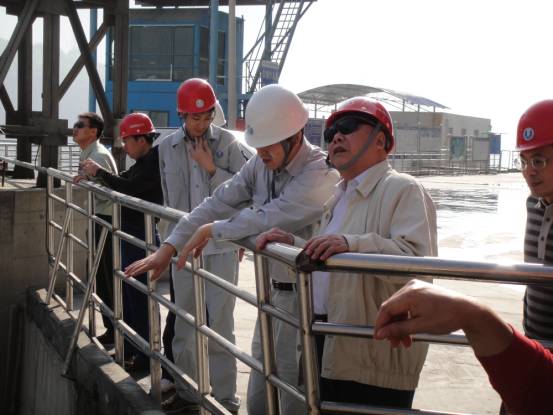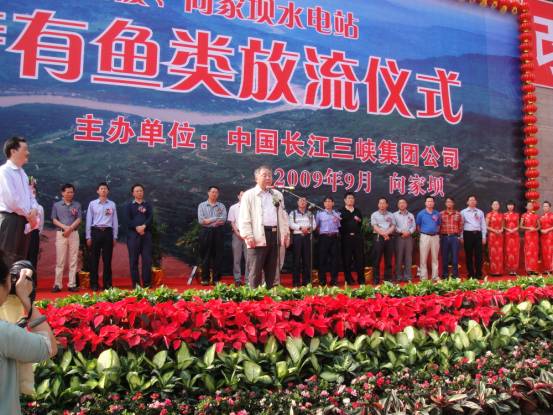
Newsroom
IHB Professor Investigates the Lower Reaches of Jinsha River

IHB Prof. Wenxuan CAO investigated the construction region of Xiluodu Hydropower Station, a hydroelectric power plant being constructed on the Jinsha River
Invited by the China Three Gorges Corporation (CTGC), IHB Prof. Wenxuan CAO who is also academician of the Chinese Academy of Sciences (CAS) investigated the lower reaches of Jinsha River which is the westernmost of the major headwater streams of the Yangtze River from Sept. 25 to 30, 2009. Dr. Yongbo CHEN and Dr. Xiujiang ZHAO from the CTGC, together with IHB Profs. Lirong SONG, Jianwei WANG and Bangding XIAO accompanied Prof. Cao in this investigation.
In the six-day investigation, the delegation led by Prof. Cao investigated the dam site to be built in Baihetan Hydropower Station which is the nation's third-largest hydropower station, the Heishui River which is the tributary of Jinsha River, the Tanglang River and Pudu River which are located in the lower reaches of Lake Dian (a large inter-land lake located on the Yunnan-Guizhou Plateau close to Kunming, Yunnan province), the construction region of Xiluodu and Xiangjiaba Hydropower Stations which are two hydroelectric power plants being constructed on the Jinsha River, etc. They also took part in the fish stocking program of rare and endangered fish organized by Yibing Fish Reproduction Station of CTGC, and later communicated with leaders and experts from CTGC and construction departments of Xiluodu and Xiangjiaba Hydropower Stations on ecological and environmental issues existing in the hydropower development of the lower reaches of Jinsha River.
Prof. Cao said that high priority should be given to the accumulative effects in the hydroelectric cascade exploitation of Jinsha Hydropower Station. More concerns should be given to the hydroelectric cascade exploitation of upper and lower reaches of Jinsha River, the regional social and economic development and the ecological status and evolution of the peripheral areas of Jinsha River. It’s urgent to be fully aware of the potential ecological risks that might occur in the near future and start to find out their solutions as early as possible. Prof. Cao also showed special concern over water quality in the planned reservoir region of Baihetan Hydropower Station, pointing out that there exist risks of breaking out water bloom and polluting drinking water.
The investigation found that water bloom has already broken out in some part of Tanglang River and Pudu River which are located in the lower reaches of Lake Dian. Prof. Song said that as the hydroelectric cascade exploitation undertaken in the lower reaches of Jinsha River, the chance of breaking out water bloom in the reservoir region and the tributary of Jinsha River rises. If the water diversion scheme be introduced into the project planning, the possibility of breaking out cyanobacterial water bloom in the regions surrounding the cascade hydropower stations located in the lower reaches of Jinsha River might rise after the project having been carried out. He suggested that a baseline survey of the water environment, risk prewarning of water bloom and prevention strategies should be conducted as early as possible.
Mr. Qixiang FAN, vice general manager of CTGC said that CTGC has been steadfastly adhere to the idea that "a well-constructed power plant can promote regional economy, improve regional environment, produce benefits for a large number of Three Gorges migrants.” As for the ecological problems might be incurred by the hydroelectric cascade exploitation, CTGC will find out more effective measures to solve them, especially those existing in the fields of water quality management, water ecological protection and fish conservation. CTGC will hold a symposium to discuss problems concerning with the above-mentioned problems in the near future.

IHB Prof. Wenxuan CAO took part in the fish stocking program of rare and endangered fish organized by Yibing Fish Reproduction Station of China Three Gorges Corporation